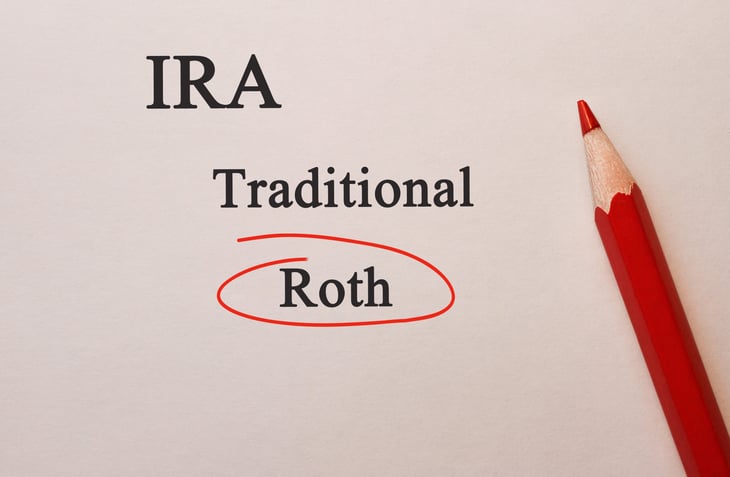
Editor’s Note: This story comes from Wealthramp.
2022 has proven to be a very challenging year for investors to navigate, and the third quarter of the year did not deliver better news. Despite an equity market rally early in the quarter, the month of September delivered more bad news and the U.S. equity market index lost another 4.5% for the quarter.
The U.S. equity market is down 17.6% for the rolling 12 months ending Sept. 30, 2022. International markets provided no refuge as developed country equities were down 9.2% for the third quarter and have lost 23.9% for the rolling 12 months. Emerging market indexes experienced similar losses, losing 11.8% for the quarter and 28.1% for the rolling 12 months.
Exacerbating the pain felt by investors, bond markets have not fared any better. The broad U.S. bond market index lost 4.8% for the third quarter and is down 14.6% for the rolling 12 months. The global bond market index fared slightly better, losing 2.2% for the third quarter and 9.9% for the rolling 12 months.
The poor economic conditions and disappointing market conditions have left many asking what moves they should be making now. The good news is that there are always strategies we can employ to improve our financial condition, but sometimes we need to dig a little deeper into the financial planning playbook.
Here are seven financial planning moves to consider making before the end of 2022 to improve your financial picture for the future.
1. Tax-Loss Harvesting

Even the most casual of football fans has probably heard an announcer talking at one time or another about one team’s offense taking advantage of what the opposing defense gives them. That is exactly what we are talking about here.
Tax-loss harvesting is a strategy we can employ to realize investment losses in nonqualified (non-IRA) accounts to reduce capital gains taxes, or potentially offset up to $3,000 of income taxes for the current tax year.
It is important to note that the strategy can be more or less advantageous to investors based on a number of factors, including the investor’s tax bracket. It is also important to understand that tax-loss harvesting only postpones tax obligations, it does not eliminate them.
There are some complicated rules associated with tax-loss harvesting, including the onerous IRS wash-sale rule, so it is important to work with your financial planner and tax professional to ensure you do not run afoul of the IRS rules.
2. Roth IRA Conversions

Another golden opportunity that some investors may be overlooking in 2022 is the Roth IRA conversion. Converting traditional IRA assets into a Roth IRA can have several long-term advantages, especially for taxpayers who are prohibited from making regular Roth IRA contributions because they earn too much income or investors with long time horizons before retirement.
With equity and bond markets down significantly in 2022, Roth IRA conversions are very attractive now because the future appreciation in the value of the converted assets will occur in Roth IRAs instead of traditional IRAs which reduces future tax liabilities during retirement.
There are a few rules of thumb to keep in mind when considering a Roth IRA conversion. First, any income tax owed on converted assets should be paid with non-IRA savings and not the IRA itself, otherwise the benefits of the Roth conversion are eroded.
Secondly, the amount of IRA assets converted is added to your gross taxable income, so care should be taken to avoid converting amounts that will push taxpayers into higher tax brackets.
Lastly, Roth IRA conversions provide larger benefits the longer the assets will remain in a Roth IRA. Investors nearing or already in retirement should consult their Certified Financial Planner and tax professional to determine the likely benefit of any Roth IRA conversions.
3. Accelerating and Maximizing Contributions

For investors who regularly contribute to workplace retirement plans, Roth and/or traditional IRAs as part of their investment strategy, the market downturn in 2022 provides a tremendous opportunity to purchase assets at a steep discount. With investment markets experiencing double-digit losses since the beginning of 2022, investors are presented with two attractive opportunities today.
The first opportunity is to accelerate future contributions into the present. If investors have ample cash available, accelerating contributions can help them lock in gains when investment markets rebound. Similarly, contributing the annual maximum amount to both Roth and traditional IRAs and/or workplace retirement plans like 401(k)s or Simple IRAs will pay dividends down the road when markets recover from the 2022 downturn.
4. Shortening Maturities in Fixed Income Investments

Clients of Bollin Wealth Management have owned short duration bond portfolios for quite a while now, anticipating the very environment we are experiencing now: rapid rate increases by the Federal Reserve caused by runaway inflation. But many investors may own fixed income investments with longer maturities than what is currently recommended.
There are two reasons for owning shorter maturity bonds now. First, the yield curve is inverted, which means investors earn less yield for holding bonds that mature more than three years from now. (By the way, an inverted yield curve is a classic sign of an economic recession.)
Secondly, bonds lose value each time the Federal Reserve raises rates. Bonds with shorter maturities lose less value than bonds with longer maturities when this occurs. Since the Federal Reserve plans to raise rates several more times through 2022 and into 2023 in an effort to tame inflation, further losses in longer maturity bonds are almost a certainty.
5. Making Your Cash Work for You

The rising interest rate environment has wreaked havoc on many investors’ bond portfolios, but there is an upside to higher interest rates: higher yields on cash reserves. Many investors have become conditioned to low or non-existent yields on money market funds and cash reserves over the past decade. With the changing interest rate environment, the opportunity to earn a little return on your cash reserves exists again.
Investment opportunities with cash reserves vary widely among and even within institutions, so investors need to be careful when choosing the right option for their situation. It is important to understand that these cash alternative options and money market funds offer both different yields and liquidity risks. Consult with your financial planner to make sure you understand the risks and establish your comfort level with the options available to you.
6. Gifting Strategies

For many wealthier Americans gifting has become an important estate planning tool that helps move assets from their estate to younger generations and charitable interests. With the annual exclusion gift limit at $16,000 per person in 2022, simply shifting their gifting strategy can help Americans pass along more wealth to their children, grandchildren, and charitable interests.
Instead of gifting cash to their intended targets, investors may wish to pass along $16,000 worth of individual stocks or mutual funds that have lost value in 2022 because of the broad market correction. When the value of the gifted stock or mutual fund rebounds, the individual or charitable organization will have a higher valued gift that avoids the gift tax rule. This strategy can also help the gift provider avoid some capital gains taxes, as well!
7. Strategies for Borrowers

For those Americans who are currently borrowing money or plan to borrow money, the window for obtaining lower interest rates may be disappearing. But with the Federal Reserve planning more interest rate hikes for the remainder of 2022 and into 2023, there is still time to lock in rates lower than what will be available in a few months.
While interest rates on loans have increased dramatically as the Federal Reserve has raised rates at breakneck speed, rates for borrowing are still relatively cheap by historical standards – even for mortgages. Locking in a lower rate today can save borrowers some money and position them to refinance their debt obligations in the future when the Federal Reserve loosens rates after the threat of rampant inflation has subsided.
Conclusion

Even adverse market and economic conditions can provide financial planning opportunities for savvy investors. Not all seven financial planning strategies will make sense for everyone, but investors can position themselves for future success by employing some of these financial planning moves.
Investment Returns Data: Frank Russell Company, Bloomberg and MSCI.
